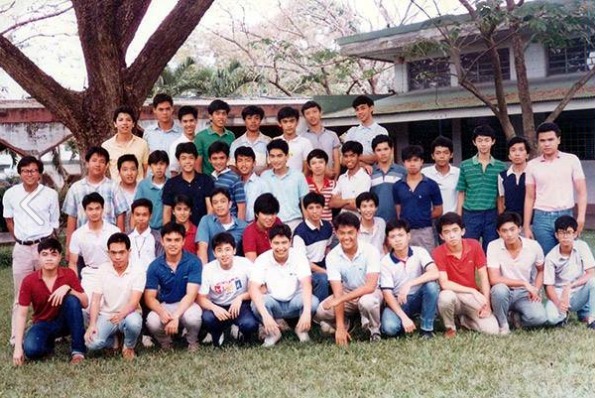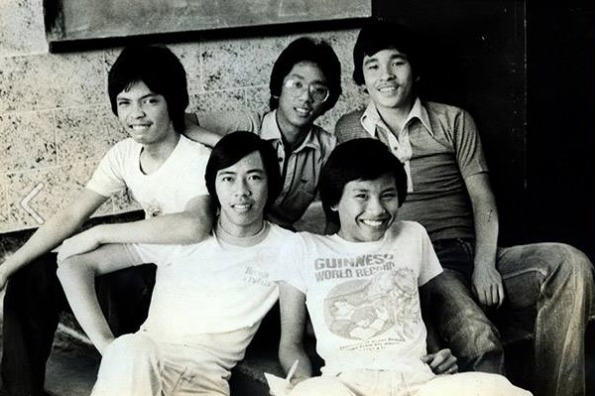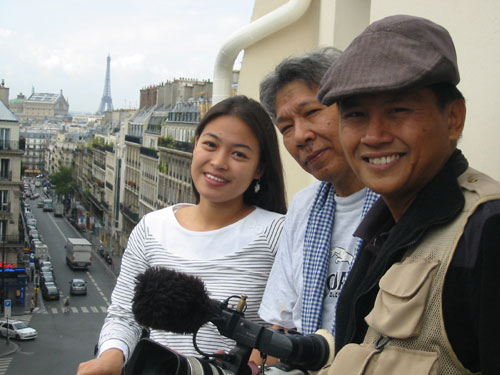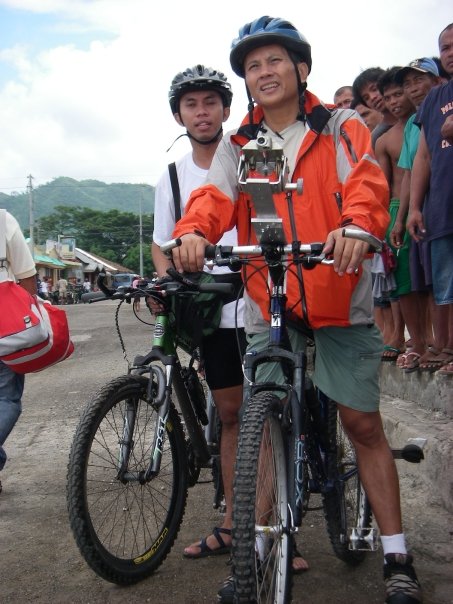Filtered By: Publicaffairs
Public Affairs
‘A great way to quench your curiosity:' Howie Severino marks 25 years as journalist
By Cristina Tantengco

Did you know that Howie once hiked alone for a week to document hidden marijuana plantations? From print to TV to online, he’s done it all — picking up unique experiences along the way.
“Assume that print journalism has changed forever,” says Howie Severino.
The veteran journalist has been with GMA 7’s award-winning documentary program “I-Witness” for the past eleven years, after starting a career in print. These days, he also co-anchors “News to Go” and is the editor-in-chief of GMA News Online. The year 2013 marks his 25th year in the industry.
His advice for today’s aspiring journalists? Do more than write. “You will need a much more varied skill set than your forebears. Deadlines for stories are no longer this afternoon but right now.” When asked what stories he’s looking for this 2014, Howie smiles: "Secret.”
Howie Severino’s new documentary, “1983: A Documentary on the Unknown Ninoy”, revisits the years (1980-83) when Senator Benigno “Ninoy” Aquino Jr. was in exile in Boston — where Howie, then a college student, sought him out as a mentor. Catch it this December 9 (Monday), 11:30 PM on GMA 7.
Here’s the full conversation with the “I-Witness” host:
Q: While studying in Boston, did you already think about becoming a journalist?
Howie Severino: I’ve been thinking about becoming a journalist since the 5th grade. I was a school journalist from grade school to my senior year in college when I was an editor of the campus newspaper. I was also editor of a college magazine. In college, journalism was what consumed most of my time. The US East Coast was a great place to learn journalism – there was an excellent Boston newspaper, the Boston Globe, and I read the New York Times every day, perhaps the best journalism and writing education one can get.

"[Teaching] widened my perspective." Howie Severino taught English at the Ateneo de Manila High School during the mid-1980s.
Although journalism is the only thing I really wanted to do, my short stints as a teacher, activist, and government worker widened my perspective on the world and help me now as I try to understand it as a journalist.
I wanted to be of service to society but politics and activism were not for me. Journalism enables me to serve while quenching my curiosity about people and my country.
Q: What made you go into newspaper writing, and how did you first get published?

A young Howie poses with his high school friends in the Philippines.
I was first published as a campus journalist. After college, I wrote a lot for publication. During the Marcos era, I was occasionally published by Business Day, a respected and independent newspaper in a very difficult media environment.
Q: As a print journalist, which stories or beat did you enjoy writing for most?
Howie: I wrote a lot about the communist insurgency in Mindanao and the Cordillera, and about the environment. I don’t know if one can enjoy writing about social problems, but I found reporting on these subjects fulfilling.
Q: What was the most memorable experience you had as a print journalist?
Howie: Hiking for nearly a week alone in the Cordillera, from Kiangan in Ifugao to Buguias in Benguet, meeting people along the way for a story on hidden marijuana plantations and ghost mountain roads.
Q: Many “I-Witness” fans were surprised to find out you were once an English teacher and activist. What’s another thing they don’t know about you?
Howie: I love being around my bohemian artist friends, and I used to have shoulder-length hair like many of them.
About documentaries.

The team that produced "Little Bad Boy: Ang binatang Rizal sa Europa," (L-R) Executive Producer Ella Evangelista-Martelino, cameraman Egay Navarro, and Howie Severino, stand on the balcony of the Hotel de Paris, where Rizal first stayed in Paris.
Howie: I covered an Abu Sayyaf hostage crisis in Basilan and almost got killed when I was caught in the middle of a firefight. I’ve received death threats. Another time, I was on my way to a shoot when the plane I was riding made an emergency landing. In general, though, I’ve been very lucky and have lived a charmed life.
Q: Is there a case study from your documentaries whom you’ve stayed in touch with? In previous interviews, you mentioned your friendships with an elderly Filipino war veteran in the US and with acclaimed indie filmmaker Auraeus Solito, both subjects of some of your initial documentaries.
Howie: The elderly war veteran, Floro Bagasala, died earlier this year. He was like my lolo, and his family treated me like one of their own. Auraeus Solito has been achieving his dream of directing socially relevant films about his tribe and culture that have reached mainstream audiences.
More recently, I got to know Jonard, a boy from Eastern Samar who mined chromite with his family. We met them when we documented their hard lives. When we got back to Manila, we sent him a bicycle, which was his fondest wish at the time. When Typhoon Yolanda happened, we could no longer contact him or anyone else in his community. Someone we know went to his place afterwards and found him and his family alive. But their home and possessions are gone, including his bicycle. We are in the process of replacing it.
[Related: Watch an excerpt from "Chromite Kids"]
[Related: Watch an excerpt from "Chromite Kids"]
Among the great joys of journalism is in meeting all kinds of people and spending quality time with them.
Q: Of all the countries you’ve visited to make documentaries, which had the most delicious food?
Howie: Japan, France, Thailand, Spain, USA. My favorite was probably Japan because they also had the healthiest cuisine.
 Q: Your bicycle has been a storytelling tool in your documentaries. Of all the places you’ve visited, which was the best place to bike and why?
Q: Your bicycle has been a storytelling tool in your documentaries. Of all the places you’ve visited, which was the best place to bike and why? Howie: Bohol, which has very friendly people, exquisite scenery, good roads without much traffic, fellow cyclists who are fun to be with, and a place called Barangay Biking (which I found out was actually pronounced BEE-king, which is a kind of reed).
Life lessons
Q: Now that you’ve been a journalist for 25 years—that’s longer than fresh grads have been alive—what are the most valuable things you’ve learned about writing?
Howie: You can’t improve as a writer without reading widely and a lot. And good material for writing comes from living an interesting life. Seek adventure and meet as many kinds of people as you can. And always be nice to them.
Q: What advice can you offer to aspiring print journalists?
Howie: Assume that print journalism has already changed forever and you will need a much more varied skill set than your forebears. Deadlines for stories are no longer this afternoon but right now.
Q: What advice can you offer to aspiring documentary filmmakers?
Howie: Know the masters, work constantly on your craft, be fair to all of your subjects (even the bad guys).
—PF, GMA News
—PF, GMA News
More Videos
Most Popular



